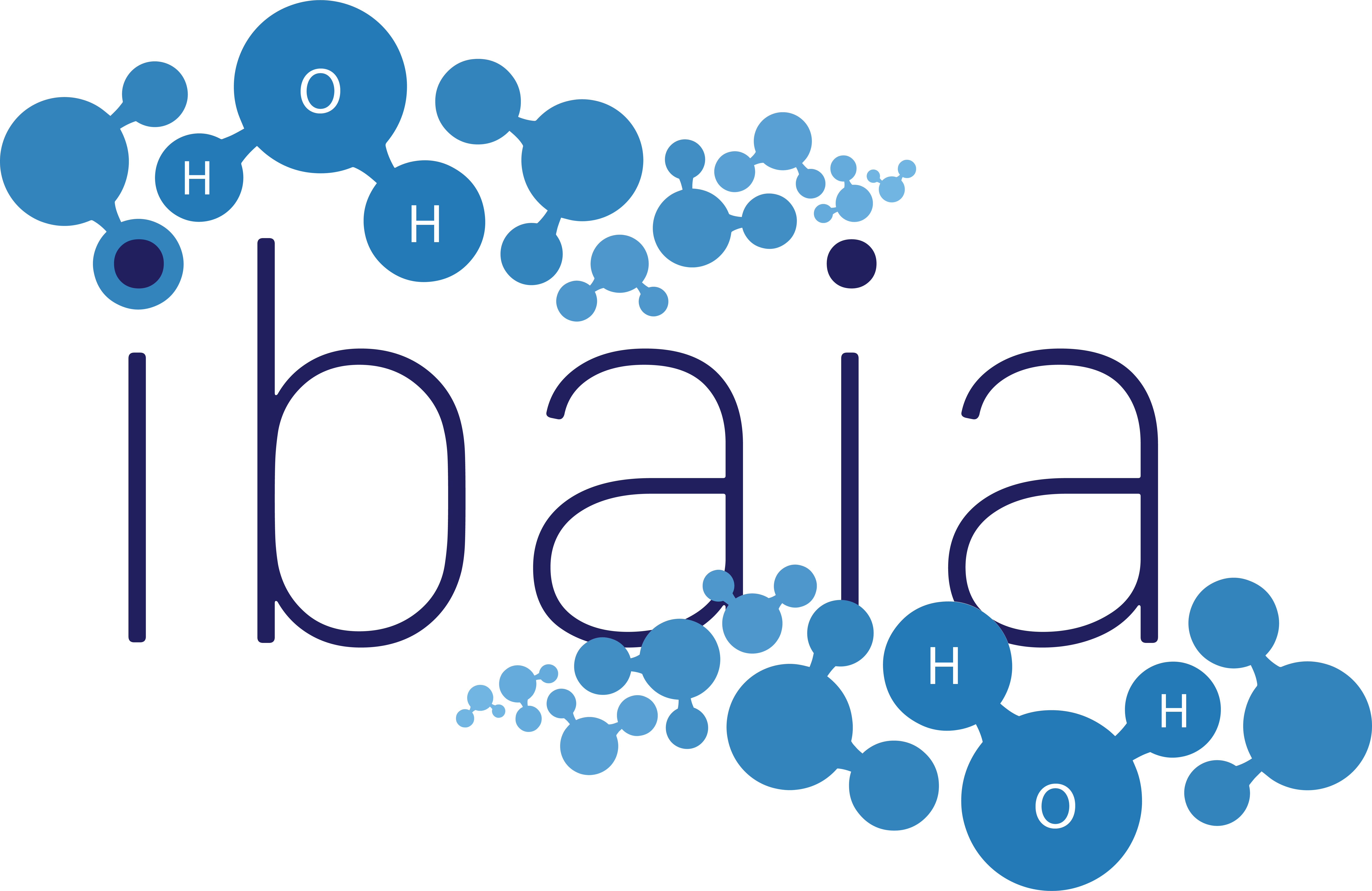
Tell us about you PhD research and why the field interests you.
My PhD is about development new Ag containing glass-based materials doped with erbium and with low amount of impurities for photonic applications. Using thermal treatment and/or ion exchange, the main goal is to grow Ag nanoparticles in order to enhance the spectroscopic properties of Er3+ doped glasses due to the surface plasmon resonance (SPR) of Ag NPs.
What is your role within the IBAIA Project?
My role is to investigate the Na-Ag ion exchange process in the newly developed tellurite glasses which will be crucial for the fabrication of channel waveguides.
Tell us a bit more about the organisation/company you work with.
Tampere University is one of the most multidisciplinary universities in Finland. Almost all internationally recognised fields of study are represented at our university, which brings together research and education in technology, health and society.
What excites you most about the project?
The potential to contribute to the preservation of ecosystems and human health through real-time water quality monitoring systems is what excites me the most about the project.
What do you expect to achieve from participation in IBAIA and what are your aspirations for the future?
Participating in this project offers me the opportunity to acquire vital knowledge crucial for the future of our planet, particularly in terms of understanding and safeguarding our water resources, which are fundamental for sustaining life and ecosystems worldwide. For the future, I aspire to continue participating in projects aimed at enhancing quality of life by leveraging technology and innovation to address different challenges, to put effort to contribute to a better world for all.
What do you think the main benefits of the project will be?
Water, as one of the most critical resources today, poses significant challenges for the future, but our project’s impact could yield substantial benefits, such as enhancing public safety, monitoring contamination, and promoting supply chain sustainability. By addressing these challenges, we aim to make a tangible difference in both people’s lives and the environment.
What do you think EU collaborative research projects have to offer?
Participating in EU collaborative research projects presents the opportunity to collaborate within a powerful international consortium including top-tier research laboratories and private enterprises, to encourage the exchange of various expertise and innovative approaches.
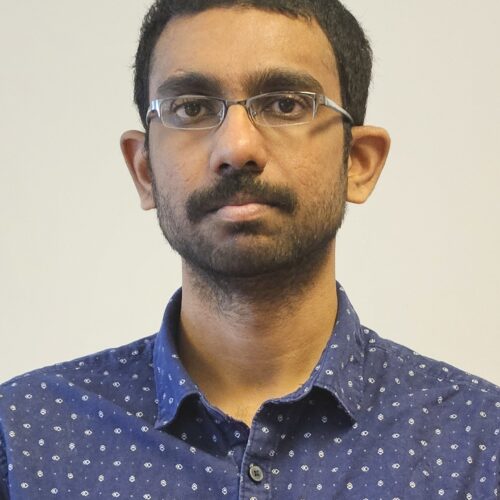
Tell us about you PhD research and why the field interests you.
My research is structured under co-tutelle leading to a double doctoral degree, where I get to work and use the expertise from both universities, TAU and UPCE. I am focussed on glass science, more particularly on developing new suitable glass compositions that have high refractive index, can host rare earth elements, and can be deposited into films. By determining and tuning the glass forming abilities along with the concentration of rare earth elements, the glassy materials can be exploited for applications such as waveguiding. I find it interesting since this field has presence in integrated photonics where the active glass materials can be used.
What is your role within the IBAIA Project?
I am involved in the IBAIA project under Work Package 2 (WP2) for the task “Development of active glass; slab and channel waveguides”. My role involves glass synthesis and fabrication of thin amorphous films. Important part of my role is also in detailed characterization of properties of both, bulk glasses, and corresponding thin films.
Tell us a bit more about the organisation/company you work with.
Tampere University (TAU) ranked among the top 500 according to QS World University rankings 2024, is the second largest public university in Finland with education and research activities in the fields of engineering and natural sciences, biomedical, and arts and literature. The photonic glasses group which I am a part of, is one of the unique teams and among the few in Finland focussing on research relating to amorphous glass materials. The University of Pardubice (UPCE) located in Czech Republic is the largest and one and only public university that caters to the education needs of the entire region of Pardubice. The pride of the University is in the Faculty of Chemical Technology (FChT), which is also the department where I happen to work under, has its history traced back to 1950 and is the key factor to result in the founding of the institute.
What excites you most about the project?
The use of interferometry and change in refractive index for achieving sensing capabilities for microplastics and salinity respectively is an interesting aspect. Fulfilling the requirements by also overcoming the challenges and see this concept being realized is the most exciting part. I look forward to it.
What do you expect to achieve from participation in IBAIA and what are your aspirations for the future?
The recognition and exposure of my work and contribution towards the project is an achievement which I expect that would bring me closer to academic and industrial partners. I plan to use this expertise for developing my career in the field of applied glass science.
What do you think the main benefits of the project will be?
The benefit of the project is that it can robustly qualify water purity of natural water bodies by quantifying multiple parameters. I believe that this project is beneficial to public departments and governments who are interested to use it for evaluating their environment and pollution control.
What do you think EU collaborative research projects have to offer?
EU projects offers the possibility to carry out innovation and research by offering a larger access to facilities and techniques. The specialization and diversity from different fields and backgrounds help to transition ideas from just being a concept and refine existing solutions.
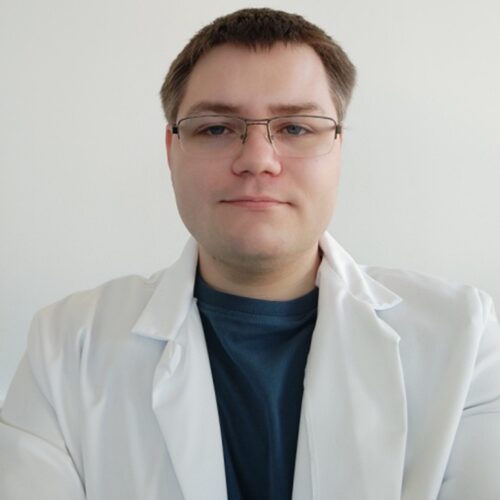
Tell us about you PhD research and why the field interests you.
The focus of my research is a functionalization of infra-red chalcogenide photonic sensor by the means of polymer membrane. This is to obtain a sensor capable of real-time evaluation of water pollution. This is critical for ensuring the safety of environment, human health and also for the use of water in industry. Save, drinkable water is important for the economy as a whole, therefore there lies my interest in this project.
What is your role within the IBAIA Project?
My role lies in the functionalization of the developed sensor. Since measurements in infrared spectrum are difficult when it comes to water solution, it is important to deposit a membrane on the surface, allowing for extraction of analytes and exclusion of water. My role also include research on usable polymers for this role as they have to be, for example, hydrophobic with usable transmission spectrum. Aside from classic polymers based on petroleum, my work also consists of finding bio-based, green polymers for potential use.
Tell us a bit more about the organisation/company you work with.
| Omni thesauro sapientia praestat et auro
|
University of Pardubice is located in Czech Republic and its history can be dated back to 1950, when the vicinity of several chemical factories called for the establishment of Chemical Institute. This makes the Faculty of Chemical Technology one of the oldest chemical institutions in the country and one of the most well regarded.
What excites you most about the project?
The most interesting part of this project is the practical use of the sensor in development. The fact that international team is diligently working on a project with a clear, beneficial goal, which may find actual, important use in the future.
What do you expect to achieve from participation in IBAIA and what are your aspirations for the future?
I am glad to be part of this project not only for the opportunity it has given me in regards for my thesis, but it also allowed me to work abroad, to meet new people and to work with colleagues from various departments of chemistry and physics. I believe that this experience will allow me to continue in this manner of work once my studies are completed.
What do you think the main benefits of the project will be?
I believe that the project will be able to meet its goal, that being a development of in situ sensor modules, capable of ensuring quality of water.
What do you think EU collaborative research projects have to offer?
In my opinion, these projects offer great opportunity of bringing a wide variety of different scientific fields together in order to work on a project with a defined goal. The provided funding allows students, researchers, and scientist to collaborate together on an international level and to widen our collective understanding of a world.
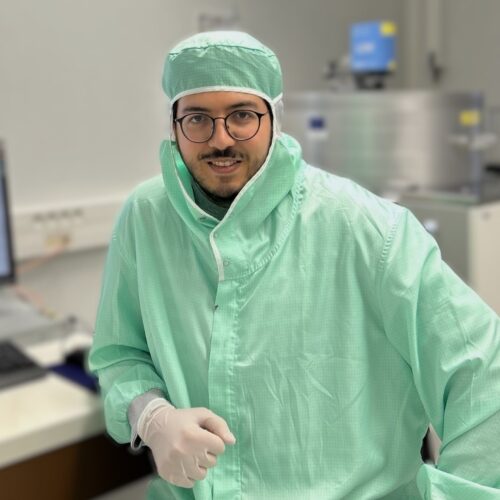
Tell us about you PhD research and why the field interests you.
I am a PhD student at Institut Foton, focusing on the fabrication of chalcogenide glass waveguides on silicon for the IBAIA project. My work involves optimizing dry etching RIE/ICP processes to minimize optical losses which is crucial for applications like mid-Infrared sensing. I also provide well-characterized waveguide samples to partners for further technology development. The unique optical properties of chalcogenides and the challenge of reducing losses in waveguides drive my interest in integrated photonics. I am passionate about applying my technical skills to advance this field and contribute to innovative photonic devices.
What is your role within the IBAIA Project?
In the IBAIA Project, my role involves fabricating chalcogenide glass waveguides, optimizing dry etching processes to minimize optical losses, characterizing waveguide samples, and providing processed waveguides to partners for further technology development. Additionally, I contribute to integrating standalone sensor modules into a portable multi-sensor device for water quality monitoring. My work aligns with the project’s goal of developing advanced sensing solutions to enhance water quality monitoring and pollution countermeasures, supporting the EU Zero Pollution Action Plan and the European Green Deal.
What excites you most about the project?
I am most excited about the IBAIA project’s innovative approach to developing comprehensive water quality monitoring solutions. The integration of complementary photonics and electrochemical technologies into portable multi-sensor devices for detecting various water pollutants is both challenging and rewarding. The project’s alignment with environmental sustainability goals, such as the European Green Deal, and the collaborative nature involving diverse partners from academia and industry, present a unique opportunity to contribute to impactful advancements in water quality monitoring. The potential to make a tangible difference in environmental protection through cutting-edge technology is truly inspiring.
What do you expect to achieve from participation in IBAIA and what are your aspirations for the future?
Participating in the IBAIA project represents an opportunity for me to contribute to the development of advanced sensor modules for water quality monitoring, aligning with the objectives of the European Green Deal. My aspirations include expanding my expertise in integrated photonics and environmental sensing technologies. I plan to apply this knowledge to future research endeavors focused on sustainable solutions for environmental monitoring and pollution mitigation. My ultimate goal is to make a meaningful contribution to the advancement of innovative technologies that address pressing environmental challenges and support global sustainability efforts.
What do you think the main benefits of the project will be?
The main benefits of the IBAIA project are expected to include the development of advanced sensor technologies for comprehensive water quality monitoring, contributing to environmental sustainability goals. The project aims to enhance pollution detection capabilities, improve water resource management, and support the implementation of effective pollution control measures.
What do you think EU collaborative research projects have to offer?
EU collaborative research projects offer unparalleled opportunities for participants to engage in multilateral research endeavors, leveraging diverse expertise, infrastructure, and resources from international partners. These projects facilitate access to cutting-edge knowledge, foster innovation, and address complex global challenges through collaborative efforts that transcend borders and disciplines.
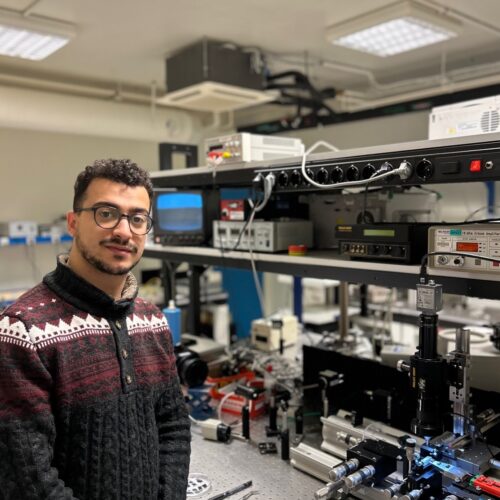
Tell us about you PhD research and why the field interests you.
The aim of my thesis is to develop an optical integrated sensor in the mid-infrared range. The work consists of first carrying out a state of the art of photonics integrated sensors, then performing simulations to optimize the propagation on the integrated circuit to be fabricated. A characterization bench adapted for the mid-infrared range was set up in order to characterize the integrated circuits. The optical bench is also used to detect the presence of molecules, in liquid or gas state, using absorption spectroscopy. Manipulating light was always fascinating form me, and being able to detect molecules using light is exciting for me. What I enjoy most during my thesis is reproducing experimentally, with an optical integrated transducer, the tabulated absorption spectra of molecules in the infrared range.
What is your role within the IBAIA Project?
My role in the project is to carry out simulations to optimize the propagation of light in the optical integrated circuits that constitutes the transduction part of the sensor. I also conduct transduction tests in liquid phase on various chemical species for the proof of concept of the sensing. Furthermore, significant coordination among project partners is required to progress collectively. Discussions and experimental tests are consistently conducted regarding materials, fluidic circuits, laser sources, and detectors to ensure the proper assembly and packaging of the sensor.
Tell us a bit more about the organisation/company you work with.
FOTON Institute conducts research in photonics, which was primarily concerned with optical communications, and that is now covering applications as distinct as defence, life sciences, industry, or energy. This institute includes teams and staff from the University of Rennes, INSA Rennes, and the CNRS.
What excites you most about the project?
Developing a compact sensor in the mid-infrared range that incorporates the laser source, integrated circuit, and detector parts is a good technological challenge.
What do you expect to achieve from participation in IBAIA and what are your aspirations for the future?
We are starting to obtain good results in the transduction part that I was working on. I wish optimizing the sensing to lower the detection limit below the limits set by environmental organizations’ recommendations. I hope for the successful assembly of the various sensor components developed by all the partners.
What do you think the main benefits of the project will be?
Developing an innovative compact sensor for environmental monitoring in mid-IR range is a crucial objective. Such a sensor would not only benefit environmental applications but could also find appreciation in other fields. For instance, in space engineering, where there is a constant effort to minimize the weight of components.
What do you think EU collaborative research projects have to offer?
EU projects facilitate collaboration among researchers and organizations from diverse countries and disciplines. By sharing knowledge, expertise.
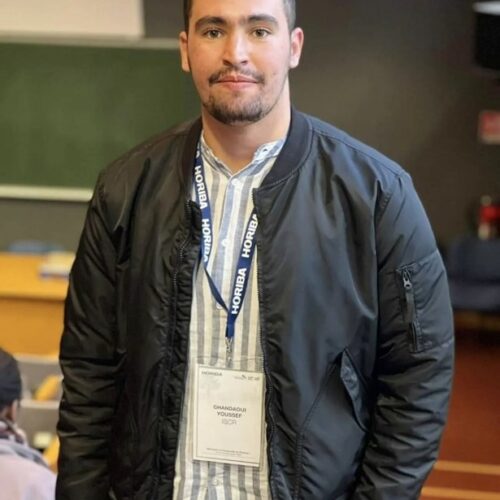
Tell us about you PhD research and why the field interests you.
My thesis is about discovering exploration of novel compositions of antimony-free selenide and sulfide glasses, and production of antimony-free sulfide and selenide thin films through the RF co-sputtering technique. This research is particularly intriguing to me because it aligns with the broader goal of enhancing material sustainability.
By identifying the most effective chalcogenide materials for photonic applications, I am particularly focused on their integration within photonic circuits, leveraging their potential in Brillouin scattering and nonlinear optics. Ultimately, this work seeks to provide a comprehensive understanding of chalcogenide material’s behavior and technological applications, aiming to advance the functionality of optical systems.
What is your role within the IBAIA Project?
My role within the IBAIA Project likely involves researching and developing antimony-free selenide and sulfide glasses, as well as thin films, for use in photonic applications. My work focuses on utilizing RF co-sputtering technique to produce these materials. Furthermore, I am engaged in integrating chalcogenide materials into photonic circuits, exploring their capabilities in Brillouin scattering and nonlinear optics, with the ultimate goal of enhancing the functionality of optical systems.
Tell us a bit more about the organisation/company you work with.
ISCR is a research institute in France known for its expertise in chemical sciences. It covers a wide range of research areas, including materials science, organic chemistry, inorganic chemistry, and theoretical chemistry, among others. The institute is involved in developing new chemical compounds, materials, and processes that can have applications in various industries and sectors, including sustainable development and new technologies.
IFoton, on the other hand, is a research unit specializing in photonics and optics. It focuses on the study and development of photonic materials, components, and systems. This includes research in areas such as semiconductor materials, optical communications, and photovoltaic energy conversion. The work at IFOTON often involves the development of new optical devices and systems, leveraging advanced photonic and optoelectronic technologies.
What excites you most about the project?
What likely excites me the most about the project is the opportunity to engage in pioneering research that merges the fields of material science and photonics, particularly through my work on chalcogenide glasses and their integration into photonic circuits.
What do you expect to achieve from participation in IBAIA and what are your aspirations for the future?
Participating in the IBAIA project aligns with my aspirations, focusing on the development of antimony-free selenide and sulfide glasses.
My primary goal is to advance scientific knowledge and technological capabilities in discovering sustainable and innovative materials for photonic applications.
What do you think the main benefits of the project will be?
The project demonstrates a strong dedication to environmental sustainability by focusing on the development of materials, which are crucial for creating more eco-friendly alternatives. From an economic perspective, the innovations generated by this project have the potential to prompt new market opportunities and drive technological progress, thereby revolutionizing industries that depend on photonic technologies.
What do you think EU collaborative research projects have to offer?
EU collaborative research projects are crucial for scientific and technological advancement, offering diverse expertise, substantial funding, and opportunities for networking and partnership building.
